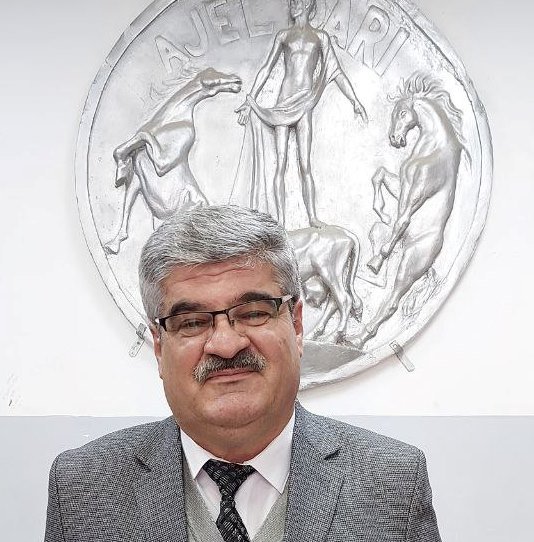How Antibodies Are Made and How They Destroy Antibodies

Dr. Mila Ibrahim Urabi
14 / 7/ 2025
Many specialists know that every antigen has its own antibodies. Today, I will explain the immune mechanism of this process.
What is an antibody?
Antibodies are Y-shaped and consist of two chains: the heavy chain and the light chain. These are proteins composed of two regions: the first is the variable antibody region, which contains the light and heavy chains. The second region is the constant region, which determines the mechanism used to destroy the antigen.
The light chain contains 220 amino acids, while the heavy chain contains 440 amino acids. There is a region called the hypervariable region (HVR), which holds the heavy chain together with the light chain. The heavy chain consists of four regions (a heterogeneous region and three constant regions), while the light chain consists of one heterogeneous region and one constant region. The junction of the two regions is called the hinge region. At the end of the V-curve, there is a region called the hinge region. This region is rich in disulfide bonds, which can open the arms 180 degrees, making the antibody T-shaped. This allows for flexibility in the joint’s movement, which allows for greater surface area for the antigen to attach. There is a very important region called the hypervariable region (HVR), mentioned above. This region is the basis for antibody heterogeneity based on antigen information. Therefore, this region determines the specificity of the antibody specific to the antigen.
There are two types of IgA antibodies produced by plasma cells:
- Secretory antibodies, which are responsible for mediating the removal of antigens from the mucosal lamina propria in the blood.
- Local antibodies, which are responsible for local immunity at serous surfaces.
The remaining antibodies are of only one type.
Now, let’s remember the first lecture and how T CD4 cells work and what they do. B cells will also participate in the APC process, just as T cells do. Consequently, B cells will display the antigen on their walls via MHC ll and will provide complete information (detailed antigen information) to T CD4 cells, which will differentiate, activate, and transform into Th2 cells via cytokines and interleukins. This interaction will secrete IL-4 and SATA-3, which will affect the B cell and cause it to differentiate and transform into plasma cells. In other words, when interleukin 4 is secreted, the B cell will transform into a plasma cell. I will explain the process of transformation. When IL4 is secreted from Th2 cells, there are receptors on the surface of B cells. These receptors bind to the ligand receptors on Th2 cells. IL4 can be secreted from any cell and affect the same cell that secreted it. This is called autophagy. It can also affect cells adjacent to the cell that secreted it, or it can affect cells very far away through the bloodstream. After that, B cells will differentiate and undergo gene expression. Under the capsule of the B cell and in the cell wall is a protein (jak protein). This protein is located beneath the receptors in the B cell and will be activated, stimulating the STAT signaling pathway. This, in turn, will stimulate gata 3 and fox D3, located in the cell nucleus, which are transcription factors, transforming the B cell into a plasma cell. This cell is fatter, almost oval in shape, and contains dense, large cytoplasm containing hundreds of ribosomes. Now, the B cell has transformed into a plasma cell, and now comes the turn to how antibodies are manufactured.
Now, after all these immune processes and interactions, plasma cells have become antibody factories, and I will explain how they are manufactured in these laboratories. There are genes responsible for producing the heavy chain and genes responsible for producing the light chain. These genes are located in the chromosomes of the plasma cell’s DNA. The first gene, VDJ (variable (V), diversity (D), and joining (J), will perform segment recombination to produce the heavy chain, while the VJ gene is responsible for forming the light chain.
All of this occurs under the influence of IL4 signals, which affect the cell’s DNA and produce mRNA, which will travel to the ribosomes in the cytoplasm. The ribosome then produces the heavy and light chains within itself and then releases these chains into the cytoplasm. In the cytoplasm, these chains will assemble to form antibodies.
This antibody is specific to the antigen that initially entered the body and contains all the information for that antigen. Now, how is it released from plasma cells into the body?
Antibodies gather under the plasma cell membrane, then fuse with the membrane to form vesicles. More precisely, they fuse with the cell wall. The cell then acts as a pump for the antibodies, releasing them outside the cell and into the blood, lymph, or elsewhere in the body. Plasma cells have a lifespan of 2-3 days. Therefore, millions of these cells exist in our bodies daily.
Antibodies travel throughout the body to recognize the antigen for which they were created. This, in turn, will be linked to another lecture on neutralizing antibodies to vaccine antigens, which I will write about soon.
Many thanks to my professors (Dr. Abdul Jabbar Al-Shammari and Dr. Abdullah Shaheen).



